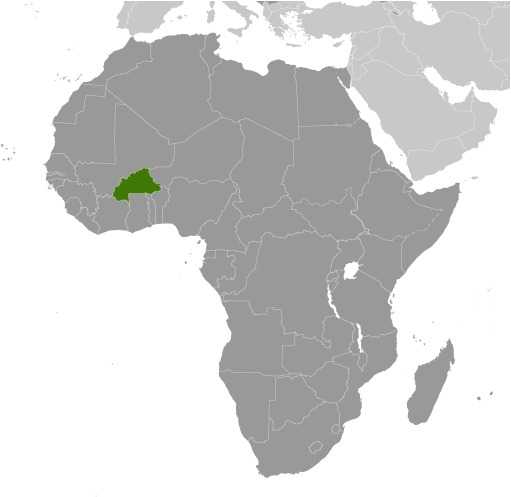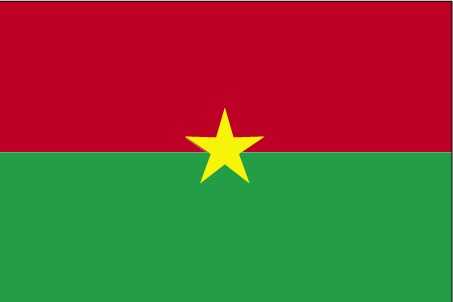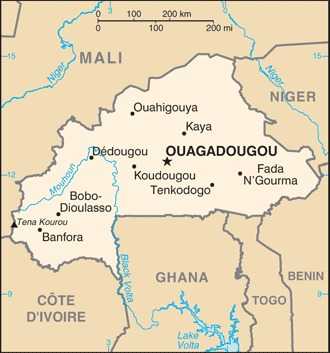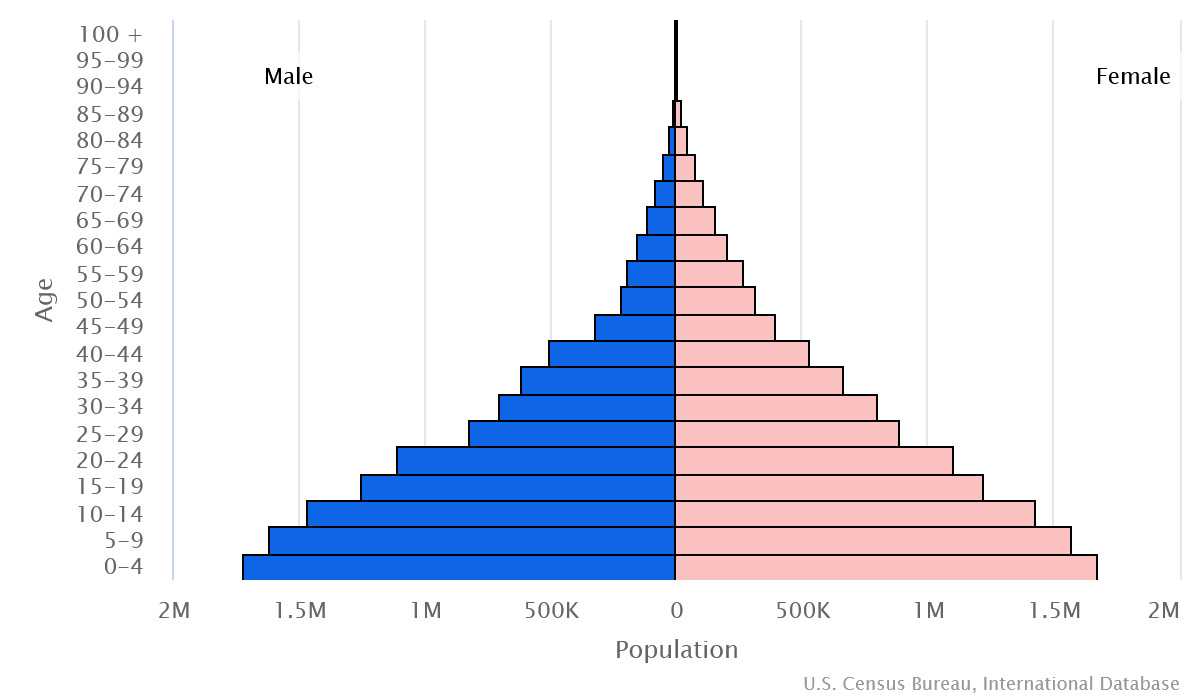Introduction
Background
Burkina Faso achieved independence from France in 1960. Repeated military coups have been the norm for much of the country's history. Terrorism, recurring drought, food insecurity, and poverty are among Burkina Faso's ongoing problems.
Geography
Area
total : 274,200 sq km
land: 273,800 sq km
water: 400 sq km
Climate
three climate zones including a hot tropical savanna with a short rainy season in the southern half, a tropical hot semi-arid steppe climate typical of the Sahel region in the northern half, and small area of hot desert in the very north of the country bordering the Sahara Desert
Natural resources
gold, manganese, zinc, limestone, marble, phosphates, pumice, salt
People and Society
Population
total: 23,042,199
Ethnic groups
Mossi 53.7%, Fulani (Peuhl) 6.8%, Gurunsi 5.9%, Bissa 5.4%, Gurma 5.2%, Bobo 3.4%, Senufo 2.2%, Bissa 1.5%, Lobi 1.5%, Tuareg/Bella 0.1%, other 12.8%, foreign 0.7% (2021 est.)
Languages
Mossi 52.9%, Fula 7.8%, Gourmantche 6.8%, Dyula 5.7%, Bissa 3.3%, Gurunsi 3.2%, French (official) 2.2%, Bwamu 2%, Dagara 2%, San 1.7%, Marka 1.6%, Bobo 1.5%, Senufo 1.5%, Lobi 1.2%, other 6.6% (2019 est.)
Religions
Muslim 63.8%, Roman Catholic 20.1%, Animiste 9%, Protestant 6.2%, other 0.2%, none 0.7% (2019 est.)
Population growth rate
2.4% (2024 est.)
Government
Government type
presidential republic
Capital
name: Ouagadougou
Executive branch
chief of state: Transitional President Capt. Ibrahim TRAORE (since 30 September 2022)
head of government: Prime Minister Joachim KYLEM DE TAMBELA (since 21 October 2022)
Legislative branch
description: prior to the 2022 coups and ad hoc suspension of laws and constitutional provisions, unicameral National Assembly (127 seats; 111 members directly elected in 13 multi-seat constituencies by party-list proportional representation vote and 26 members elected in a nationwide constituency by proportional representation vote; members serve 5-year terms); 71-member Transitional Legislative Assembly (ALT) appointed by the military junta in 2022 indefinitely replaced the National Assembly
Economy
Economic overview
highly agrarian, low-income economy; limited natural resources; widespread poverty; terrorism disrupting potential economic activity; improving trade balance via increases in gold exports; economy inflating after prior deflation; growing public debt but still manageable
Real GDP (purchasing power parity)
$57.152 billion (2023 est.)
$55.508 billion (2022 est.)
$54.539 billion (2021 est.)
Real GDP per capita
$2,500 (2023 est.)
$2,400 (2022 est.)
$2,500 (2021 est.)
Agricultural products
sorghum, maize, fruits, vegetables, millet, cowpeas, cotton, groundnuts, sugarcane, rice (2022)
Industries
cotton lint, beverages, agricultural processing, soap, cigarettes, textiles, gold
Exports
$5.814 billion (2022 est.)
$6.234 billion (2021 est.)
$5.356 billion (2020 est.)
Exports - partners
Switzerland 74%, UAE 7%, Mali 4%, Singapore 2%, Cote d'Ivoire 2% (2022)
Exports - commodities
gold, cotton, oil seeds, coconuts/Brazil nuts/cashews, zinc ore (2022)
Imports
$6.761 billion (2022 est.)
$5.835 billion (2021 est.)
$4.779 billion (2020 est.)
Imports - partners
Cote d'Ivoire 16%, China 12%, Russia 7%, France 7%, Ghana 5% (2022)
Imports - commodities
refined petroleum, electricity, packaged medicine, plastic products, natural gas (2022)
Exchange rates
Communaute Financiere Africaine francs (XOF) per US dollar -
Page last updated: Wednesday, July 24, 2024




